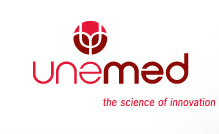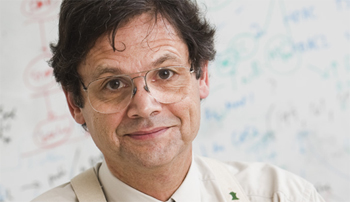 Translating discoveries made in the laboratory to the bedside is difficult.
Translating discoveries made in the laboratory to the bedside is difficult.
On average, tests in animals, then humans, take 12 to 15 years and an investment of $1.2 billion to realize a winner. Less than 1 percent of all discoveries become a viable therapy.
UNeMed, UNMC’s technology commercialization arm, can help investigators find the resources necessary to bridge the gap between discovery and commercialization.
 |
Stephen Rennard, M.D. |
What’s the significance of your discovery?
We discovered that a specific micro-interfering RNA molecule can improve repair in lung cells. The discovery may lead to novel therapeutics and may even lead to a cure for chronic obstructive pulmonary disease (COPD) and other fibrotic lung diseases. The results of my study will be published in the Oct. 15 issue of the American Journal of Respiratory and Critical Care Medicine.
|
After I filed a new invention disclosure, UNeMed helped me with a patent application — my second — and, critically, found a company for me to work with. This help provided me a resource to advance my research further than I could have on my own.
You are collaborating with Mirna Therapeutics, Inc., in Austin, Texas. Why them?
Mirna’s expertise is in cancer therapeutics that restore normal miRNA function, but they were open to expanding into other diseases. Since we began in July, they have already confirmed my initial findings that were made in human cell cultures in samples from animals. The next phase will test how the microRNA will function in mice models designed to replicate lung damage caused by smoking.